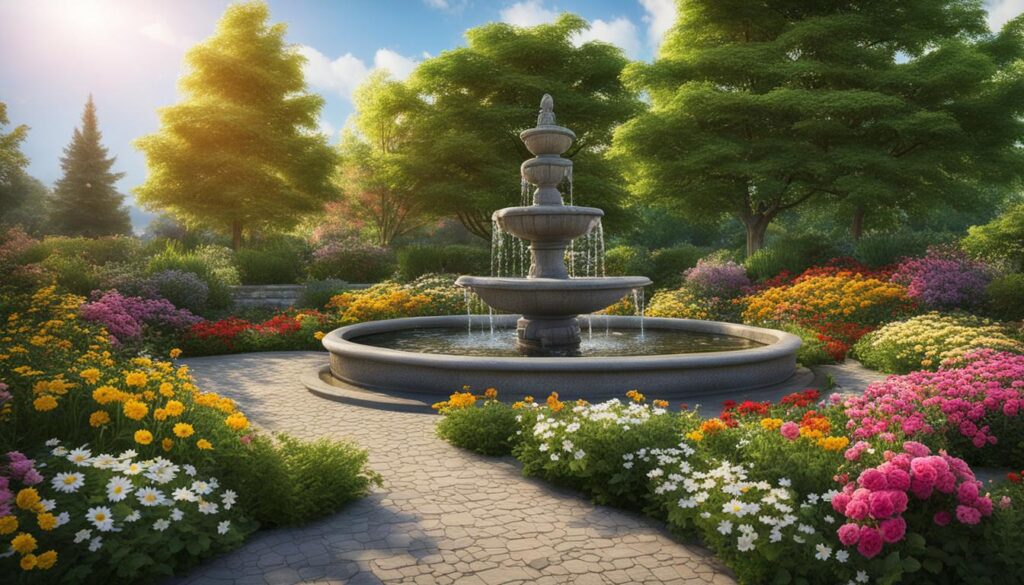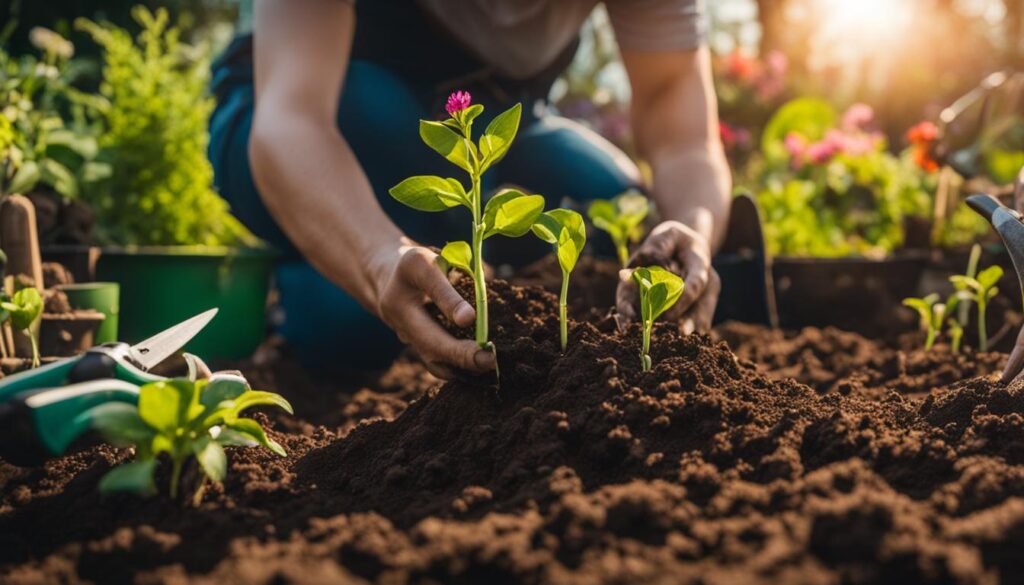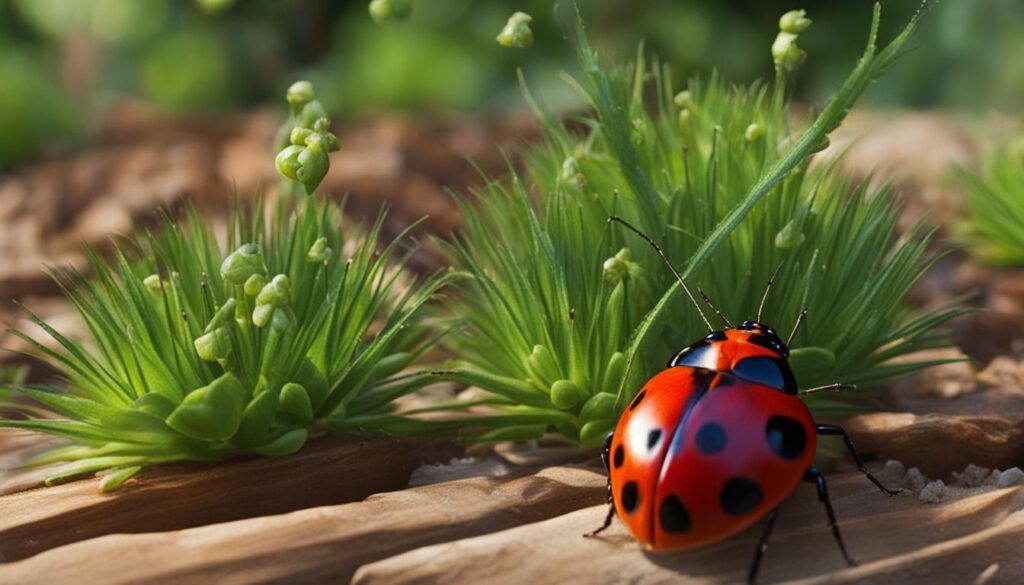If you’re new to gardening, these flower gardening tips for beginners will help you get started on your journey to creating a beautiful garden. From getting to know your garden to proper planting techniques, we’ve got you covered.
Post Summary
- Understand your garden’s aspect and soil type to determine suitable plants.
- Plan your garden design, considering color, structure, and plant combinations.
- Follow proper planting techniques, including correct depth and spacing.
- Start small with a vegetable patch and gradually expand.
- Utilize eco-friendly pest control methods and avoid harmful chemicals.
Getting to Know Your Garden
Before you start gardening, it’s important to understand your garden. By familiarizing yourself with its aspects and soil composition, you can make informed decisions about the plants to grow and create an optimal environment for their success.
Assessing Your Garden Aspect
The aspect of your garden refers to its orientation towards the sun. Understanding whether your garden is south-facing or north-facing is crucial, as it determines the amount of sunlight your plants will receive. Most flowering plants thrive in full sunlight, while others may prefer partial shade. Consider the areas of your garden that receive the most sunlight throughout the day, and plan accordingly.
Knowing Your Soil Type
Another essential aspect of understanding your garden is knowing its soil type. Different plants have specific soil requirements, and by identifying your soil type, you can choose the appropriate plants that will thrive in your garden. There are three main soil types: sandy, clay, and loamy. Sandy soil drains quickly but may require more frequent watering, while clay soil retains water but may be more prone to compaction. Loamy soil is considered ideal, as it is well-draining and retains moisture efficiently.
To determine your soil type, you can perform a simple test by digging a small hole, filling it with water, and observing how quickly it drains. You can also consult a local gardening center or hire a professional to conduct a soil test, which provides more detailed information about your soil composition, pH levels, and nutrient content.
Observing Existing Plants
Take a closer look at the plants already growing in your garden. They can provide valuable insights into your soil’s pH level and overall fertility. Certain plants thrive in acidic soils, while others prefer alkaline or neutral conditions. By recognizing the types of plants that are flourishing, you can gain a better understanding of your garden’s soil conditions.
Remember, getting to know your garden is the first step towards creating a thriving and beautiful flower garden. Take the time to assess its aspect, determine the soil type, and observe the existing plants. Armed with this knowledge, you’ll be able to choose the right plants and provide them with the optimal growing conditions needed for a successful garden.
Garden Design and Planting Styles
When it comes to planning your garden, there are several factors to consider. The design of your garden plays a crucial role in creating a visually appealing and harmonious space. Think about the overall structure and layout of your garden, considering elements such as paths, borders, and focal points.
Color and Structure
One key aspect of garden design is color. Choose a color palette that suits your preferences and works well together. You can opt for a complementary color scheme with colors opposite each other on the color wheel, or a harmonious scheme with colors that are adjacent to each other. Consider the height and texture of your plants as well, as this will add depth and interest to your garden.
Combining Plants
Another way to create visual interest in your garden is by combining different plants. Consider pairing plants with contrasting colors, textures, and heights to create a dynamic and diverse garden. For example, you can combine tall, spiky plants with low-growing, bushy plants to create a layered effect. Be sure to choose plants that have similar sunlight and water requirements to ensure that they thrive together.
“A well-designed garden is like a work of art – it evokes emotions and creates a sense of tranquility.”
Planting Styles
When it comes to planting, there are various styles you can consider. One popular style is the cottage garden style, which features an abundance of colorful and fragrant flowers arranged in a natural and informal way. Another style is the formal garden style, characterized by symmetrical and geometric patterns. Whichever style you choose, make sure it complements your garden’s overall design and fits your personal taste.
Popular Plant Combinations
| Plant Combination | Key Features |
|---|---|
| Rosemary and Lavender | Both plants have a similar growth habit and their fragrances complement each other. |
| Black-Eyed Susan and Shasta Daisy | These flowers bloom at the same time and create a striking contrast with their yellow and white colors. |
| Hosta and Ferns | The lush, large leaves of hostas provide an excellent backdrop for the delicate fronds of ferns. |
- Consider the overall design and layout of your garden, including paths, borders, and focal points.
- Choose a color palette and consider the height and texture of your plants to add depth and interest.
- Combine different plants with contrasting colors, textures, and heights to create visual interest.
- Explore different planting styles, such as cottage or formal, to create a unique garden design.
Proper Planting Techniques
Proper planting techniques are essential for the success of your garden. Whether you’re sowing seeds indoors or planting directly in the ground, following these tips will help you achieve seed sowing success and ensure your plants thrive.
If you’re sowing seeds indoors, start by selecting a well-draining seed-starting mix and containers with drainage holes. Fill the containers with the seed-starting mix, gently pressing it down to create a level surface. Sow the seeds at the recommended depth, which can vary depending on the plant. Be sure to label the containers with the plant name and date of sowing.
Once the seeds have germinated, provide adequate light for their growth. Place the containers near a south-facing window or use artificial grow lights to provide the necessary light intensity. Maintain consistent moisture levels by watering from the bottom or misting the surface to prevent waterlogging.
If you prefer direct planting in the ground, prepare the soil by removing any weeds and incorporating organic matter. Follow the specific instructions for planting each type of plant, ensuring it’s planted at the correct depth and spacing. Proper spacing allows the plants to have enough room for air circulation and reduces competition for nutrients. Pay attention to the watering needs of the plants, providing them with adequate moisture without overwatering.
Container Gardening Tips
If you’re limited on space or have poor soil quality, container gardening is a great alternative. Use containers with drainage holes to prevent waterlogged roots. Select a potting mix specifically formulated for container gardening, as it provides the right balance of nutrients and drainage. Choose plants that are suitable for container gardening, considering their size and growth habit.
When planting in containers, add a layer of gravel or broken pottery shards at the bottom to improve drainage. Fill the container with the potting mix, leaving enough space for the plant’s root ball. Place the plants in the container, ensuring they are centered and upright. Gently firm the soil around the roots, avoiding excessive compaction.
Container gardens require regular watering, as they tend to dry out more quickly than plants in the ground. Check the moisture levels daily and water as needed, making sure not to overwater. Fertilize the container plants regularly, following the instructions on the fertilizers.
| Proper Planting Techniques | |
|---|---|
| Indoor Seed Sowing | Direct Planting in the Ground |
| 1. Select well-draining seed-starting mix. | 1. Prepare the soil by removing weeds and incorporating organic matter. |
| 2. Fill containers with seed-starting mix. | 2. Follow specific planting instructions for each plant. |
| 3. Sow seeds at recommended depth. | 3. Plant at correct depth and spacing. |
| 4. Provide adequate light and moisture. | 4. Water plants regularly, avoiding overwatering. |
Creating a Veg Patch
Starting a vegetable patch or allotment can be an exciting and rewarding endeavor for beginners. It allows you to grow your own fresh produce, connect with nature, and have a sense of accomplishment. While it may seem overwhelming at first, taking small steps and following the right practices can help you establish a thriving and productive vegetable patch. Here are some essential tips on how to start a vegetable patch and grow beginner-friendly vegetables.
Planning and Preparation
Before starting your vegetable patch, it’s important to choose the right location. Look for an area that receives at least six hours of sunlight daily and has well-drained soil. Clear any existing vegetation and remove weeds to create a clean slate for your patch. Consider constructing raised beds or using containers if you have limited space or poor soil quality.
Next, decide on the vegetables you want to grow. As a beginner, it’s best to start with easy-to-grow vegetables such as tomatoes, lettuce, radishes, and herbs like basil. Research the specific growing requirements of each vegetable, including soil type, watering needs, and optimal planting time.
Soil Preparation and Planting
Prepare the soil by loosening it with a garden fork or a tiller. Remove any rocks, roots, or debris that may hinder plant growth. Incorporate organic matter such as compost or well-rotted manure to improve soil fertility and structure. This will provide essential nutrients and enhance the soil’s ability to retain moisture.
When it comes to planting, follow the instructions on the seed packets or plant labels. Sow seeds at the recommended depth and spacing, ensuring they have enough room to grow. Water the newly planted seeds gently but consistently to keep the soil moist. As your plants grow, thin them out if necessary to ensure proper airflow and prevent overcrowding.
Maintenance and Care
Maintaining a healthy vegetable patch requires regular care and attention. Water your plants regularly, especially during dry spells, and avoid overwatering to prevent waterlogged soil. Mulch around the base of plants with straw or compost to suppress weeds, retain soil moisture, and regulate soil temperature.
Keep an eye out for pests and diseases that can affect your vegetables. Remove any infected or damaged plants promptly to prevent the spread of diseases. Consider implementing organic pest control methods, such as handpicking pests or using natural insect repellents like neem oil.
Remember to harvest your vegetables at the right time for peak flavor and freshness. Regularly check for ripe produce and enjoy the fruits of your labor. Starting a vegetable patch is a continuous learning process, so don’t be afraid to experiment and try new vegetables and growing techniques along the way.
Dealing with Pests
When it comes to maintaining a thriving garden, dealing with pests is a common challenge that every gardener faces. However, there are environmentally friendly and organic pest control methods that you can employ to manage the pests without harming beneficial insects and wildlife. By monitoring your garden closely and utilizing natural predators, you can keep pest populations in check and maintain a healthy ecosystem in your garden.
One of the most common garden pests are slugs, which can quickly munch through your plants and leave behind unsightly damage. To combat slugs organically, create barriers such as copper tape around vulnerable plants or use biological controls like nematodes. These tiny worms are harmless to humans but can significantly reduce slug populations in your garden.
Quote: “Slugs can be a persistent nuisance in the garden, but by implementing organic pest control methods, you can effectively manage their population.” – Gardening Expert
Aphids are another pest that can wreak havoc on your plants, causing stunted growth and deformed leaves. To control aphids organically, introduce natural predators such as ladybugs, lacewings, or parasitic wasps, which feed on aphids and help keep their populations in check. Additionally, you can use insecticidal soaps or neem oil sprays to control aphid outbreaks without harming beneficial insects.
| Pest | Organic Pest Control Methods |
|---|---|
| Slugs | Create barriers with copper tape, use biological controls like nematodes |
| Aphids | Introduce natural predators, use insecticidal soaps or neem oil sprays |
By implementing these organic pest control methods, you can effectively manage slugs and aphids in your garden, ensuring the health and vitality of your plants. Remember to regularly monitor your garden for increasing pest populations and take proactive measures to keep them in check. With these eco-friendly strategies, you can maintain a thriving garden while preserving the natural balance of your outdoor space.
Additional Tips for Pest Control
- Introduce companion plants that repel pests, such as marigolds to deter aphids or thyme to repel slugs.
- Practice good garden hygiene by removing any debris or fallen leaves that can harbor pests.
- Encourage biodiversity in your garden by providing habitat for beneficial insects, birds, and other wildlife.
- Rotate your crops each year to prevent the buildup of pests that target specific plants.
Composting and Mulching
Composting and mulching are essential practices in flower gardening that can greatly benefit your plants and the overall health of your garden. By composting kitchen and garden waste, you can create nutrient-rich soil amendments that will nourish your plants and promote their growth. Additionally, mulching helps retain moisture in the soil, suppresses weeds, and provides insulation for plant roots.
When it comes to composting, it’s important to choose the right compost bin for your needs. There are various options available, including compost tumblers, worm bins, and traditional compost piles. Consider factors such as space, convenience, and the amount of waste you generate. Once you have your compost bin set up, remember to turn the compost regularly to facilitate decomposition and ensure an even breakdown of organic matter.
To create compost, gather a mixture of green and brown materials. Green materials, such as fruit and vegetable scraps, coffee grounds, and grass clippings, provide nitrogen, while brown materials, such as dry leaves, shredded paper, and wood chips, provide carbon. Avoid adding meat, dairy products, and oily foods to your compost, as they can attract pests and slow down the decomposition process.
Once your composting efforts have yielded rich, dark compost, you can use it as mulch around the base of your plants. Apply a layer of compost, typically 2-3 inches thick, to help suppress weeds and retain moisture. Mulching not only improves the appearance of your garden beds but also creates a favorable environment for beneficial organisms and microorganisms to thrive.
Benefits of Composting and Mulching:
- Provides nutrient-rich soil amendments for plants
- Suppresses weeds and reduces the need for herbicides
- Retains moisture in the soil, reducing the frequency of watering
- Improves soil structure and fertility
- Promotes the growth of beneficial organisms and microorganisms
Comparing Compost Bins
| Compost Bin Type | Pros | Cons |
|---|---|---|
| Compost Tumbler | Convenient and easy to turn | Limited capacity |
| Worm Bin | Produces high-quality compost | Requires maintenance and proper feeding of worms |
| Traditional Compost Pile | Large capacity | Takes longer to decompose |
Conclusion
Congratulations on embarking on your flower gardening journey as a beginner! With these flower gardening tips for beginners, you are well on your way to creating a thriving and beautiful garden that will fill your life with joy and tranquility.
Remember, gardening is not just about the end result, but also about the process and the enjoyment it brings. Take the time to appreciate the beauty of nature unfolding in your garden. Whether it’s a vibrant bed of flowers or a lush vegetable patch, each stage of growth is a testament to your hard work and dedication.
As you continue your gardening endeavors, keep experimenting and learning. Don’t be afraid to try new plants, techniques, and designs. Gardening is a continuous journey of discovery, and with each season, you’ll gain more knowledge and experience.
So, grab your gardening tools, get your hands dirty, and immerse yourself in the wonders of nature. Your garden is waiting to be transformed into a haven of beauty and serenity. Enjoy the process, savor the rewards, and let your garden bring you endless joy and fulfillment.
FAQ
How do I determine the aspect of my garden?
Check the direction your garden faces to determine if it’s south-facing or north-facing.
Why is it important to know my soil type?
Knowing your soil type will help you choose plants that will thrive in your garden.
How can I test the pH level of my soil?
Conducting a soil test can provide insights into your soil’s pH level.
How should I plan my garden?
Design your garden by considering factors such as color and structure. Select plants that complement each other and provide year-round interest.
How do I properly plant my flowers?
Prepare the soil and follow planting instructions for each specific plant. Pay attention to depth and spacing.
How should I start a vegetable patch?
Start small and gradually expand. Research suitable vegetables for beginners and learn about proper care and maintenance.
How can I deal with garden pests in an eco-friendly way?
Monitor your garden for increasing pest populations and utilize natural predators. Incorporate organic pest control methods and avoid harmful chemicals.
How can composting benefit my garden?
Composting kitchen and garden waste can enrich the soil. Use the compost as mulch to suppress weeds and retain moisture.
How can I enjoy my garden?
Take the time to relax and appreciate the beauty you’ve created. Create spaces within your garden for relaxation and enjoyment.
What are some beginner-friendly companion plants for flower gardening?
When starting a flower garden, consider planting ideal yarrow companion plants such as lavender, salvia, and daisies. These flowers not only complement the yarrow’s delicate white blooms but also attract beneficial insects and pollinators. Plus, they require similar growing conditions, making them perfect companions for beginner gardeners.













